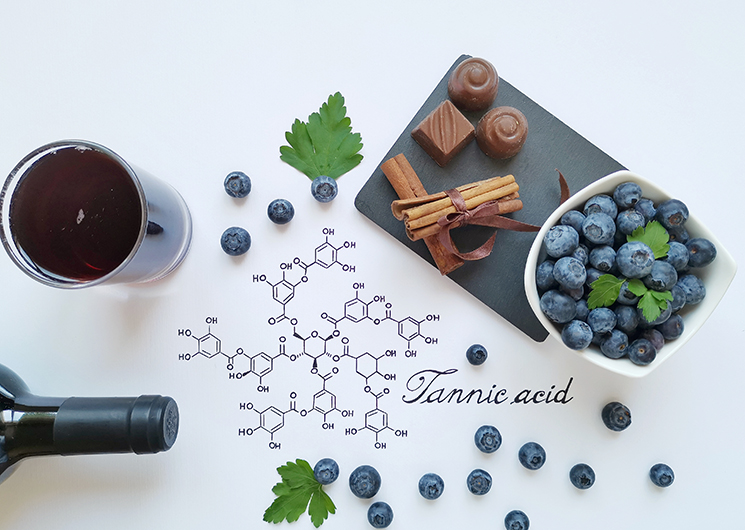More news
- Focus on the global coatings market: Global coatings market outlook
- View from the UK: Navigating chemical policy and sustainability
- Focus on adhesives: Unveiling unbreakable bonds – Testing redefines physical strengt...
- Focus on adhesives: Henkel and Covestro collaborate for sustainability of engineered wood ...
- Advances in construction chemical technology: What’s new in 2024?

Jinke Wang, Hao Yang, Lingwei Ma, Chenhao Ren & Dawei Zhang, University of Science and Technology Beijing, discuss how an active protective epoxy coating with weathering resistant, corrosion-warning and self-healing properties was developed by incorporating tannic acid (TA) loaded mesoporous silica (MSN-TA) nanocontainers. The introduction of MSN-TA nanocontainers could alleviate the coating degradation via scavenging the radicals generated during UV irradiation
Compared with the blank coating, the coating containing 5 wt.% MSN-TA nanocontainers exhibited much less degradation in surface morphology, wettability and glossiness and maintained a good barrier property after 384hr of accelerated weathering.
Once the coating was damaged, the released TA could react with the Fe3+ ions to form a chelate that endowed the coating scratch with a visible black coloration, i.e. triggering a self-warning capability to indicate the initial onset of corrosion. In addition, the generated chelate could inhibit extensive corrosion propagation, offering a significant self-healing effect demonstrated by the stabilized impedance modulus values during 28 days of immersion in NaCl solution.
Natural organisms have evolved different tissue barriers to protect themselves in harsh environments and against mechanical attack and also to respond autonomously to sense and heal damages. In contrast, common organic barrier coatings suffer severely when facing prolonged weathering conditions and aggressive environments or inevitable external mechanical damage.
During the service life of organic coatings, photo radiation will cause the generation and continuous propagation of free radicals, leading to the rupture of polymeric chains that might weaken the physical barrier effect of the coating. The continuous ingress of corrosive media will result in corrosion and subsequent accumulation of corrosion products at the interface between metal and coating and also delamination of coatings. Moreover, intrinsically present and externally applied coating defects and cracks will accelerate the failure of organic coatings. Without accurate detection of coating damage and timely repairs, the metal substrate underneath the coating will experience progressive corrosion attack, which jeopardises the structural integrity of coated metals. Therefore, enhancing the weathering resistance, as well as developing corrosion self-warning and self-healing properties are three important aspects to extend the service life of protective coatings and the underlying metal structures.
READ MORE:
One of the most efficient approaches to strengthen the weathering resistance of organic coatings is the introduction of radical scavengers, such as hindered amines and hindered phenols. However, these synthetic radical scavengers often exhibit potential hazards to human health and environment. Recently, a variety of environmentally friendly radical scavengers have been introduced, including graphene, carbon dots, Ti3C2Tx MXene and a series of bio-based additives, such as chitosan, phytic acid, and plant polyphenols.
Tannic acid (TA) is considered as a promising green radical scavenger benefiting from its abundant o-phenylphenol groups, which can donate hydrogen atoms to the free radicals generated from the weathering conditions and thus stop the free-radical chain reactions. Peng et al. used TA and tung oil for the surface treatment of wood. Due to the significant radical scavenging property of TA and the barrier effect of tung oil, the surface deterioration of wood has been successfully alleviated during 960 h of accelerated weathering testing. Qiu et al. synthesised a bio-based additive by combining the UV light absorption ability of melamine and the radical scavenging property of TA to protect polylactic acid (PLA) against UV degradation. The mass retention ratio of PLA with 5wt.% additive was 88.8%, which was ~10% higher than that of the blank PLA sample after a 100hr UV ageing test, indicating that TA is conducive to improving the weathering resistance of polymers.
Besides, the abundant o-phenylphenol groups of TA allow it to chelate with different metal ions and generate a variety of prominent colours. For instance, when TA molecules interact with Fe3+ ions, a black coloured chelate compound will be rapidly formed. During the corrosion of steel, Fe2+ ions will be initially generated from the anodic site and then be oxidised into Fe3+ ions, informing that TA can be applied as an early corrosion self-warning colour indicator for steel substrates. Moreover, the strong chelation effect of TA also makes it a high potential green corrosion inhibitor.
The corrosion inhibition effect of TA is mainly attributed to the formation of ferric tannate layers on the steel surface. Qian et al. studied the corrosion inhibition effect of TA against mild steel corrosion in seawater wet/dry cyclic condition. TA exhibited a high inhibition efficiency of ~86%, which could provide continuous and stable protection performance for the mild steel under these conditions. Benefiting from the good inhibition effect and its non-toxic property, TA has also been introduced into organic coatings to realise a timely self-healing function.
READ MORE:
Number one in Asia: PPCJ speaks to Nippon Paint’s Gladys Goh
Wu et al. applied a TA layer onto carbonate (CaCO3) microspheres loaded with benzotriazole (BTA) corrosion inhibitors, which were then incorporated into an epoxy matrix to establish a self-healing coating. When corrosion occurred at the damage area of the coating, TA and BTA molecules were simultaneously released and adsorbed on the exposed metal surface to suppress the corrosion process.
In this work, a composite coating with enhanced weathering resistance, as well as corrosion-warning and self-healing functions was developed via the introduction of TA-based nanocontainers in the coating. TA was encapsulated into mesoporous silica nanoparticles (MSN-TA) via hydrolysis and condensation of tetraethyl orthosilicate (TEOS) around a TA self-assembled template under alkaline conditions. On the one hand, the introduction of MSN-TA nanocontainers was beneficial to alleviating the weathering degradation of epoxy coating by scavenging the free radicals and preventing the invasion of aggressive media. On the other hand, when the coating was damaged, TA could release from the nanocontainers and react with the Fe3+ ions generated from the underneath steel surface to form a chelate compound.
A prominent black-coloured chelate adsorption layer was formed to offer the corrosion-warning and self-healing smart functions. The morphology and chemical composition of MSN-TA nanocontainers were characterised via scanning electron microscopy (SEM), transmission electron microscopy (TEM), Fourier transform infrared spectroscopy (FTIR), and thermogravimetric analysis (TGA). The weathering resistance of different coatings was evaluated by testing their surface morphology, wettability, glossiness, adhesion strength and corrosion resistance during accelerated weathering experiments. The corrosion-warning capability of the coatings was recorded by digital images to reflect their colour changes. The corrosion resistance and self-healing performance of the coatings were evaluated using electrochemical impedance spectroscopy (EIS) and surface characterisation.
For full details of the methodology, data and references, please visit: https://www.nature.com/articles/s41529-023-00360-7#Abs1







